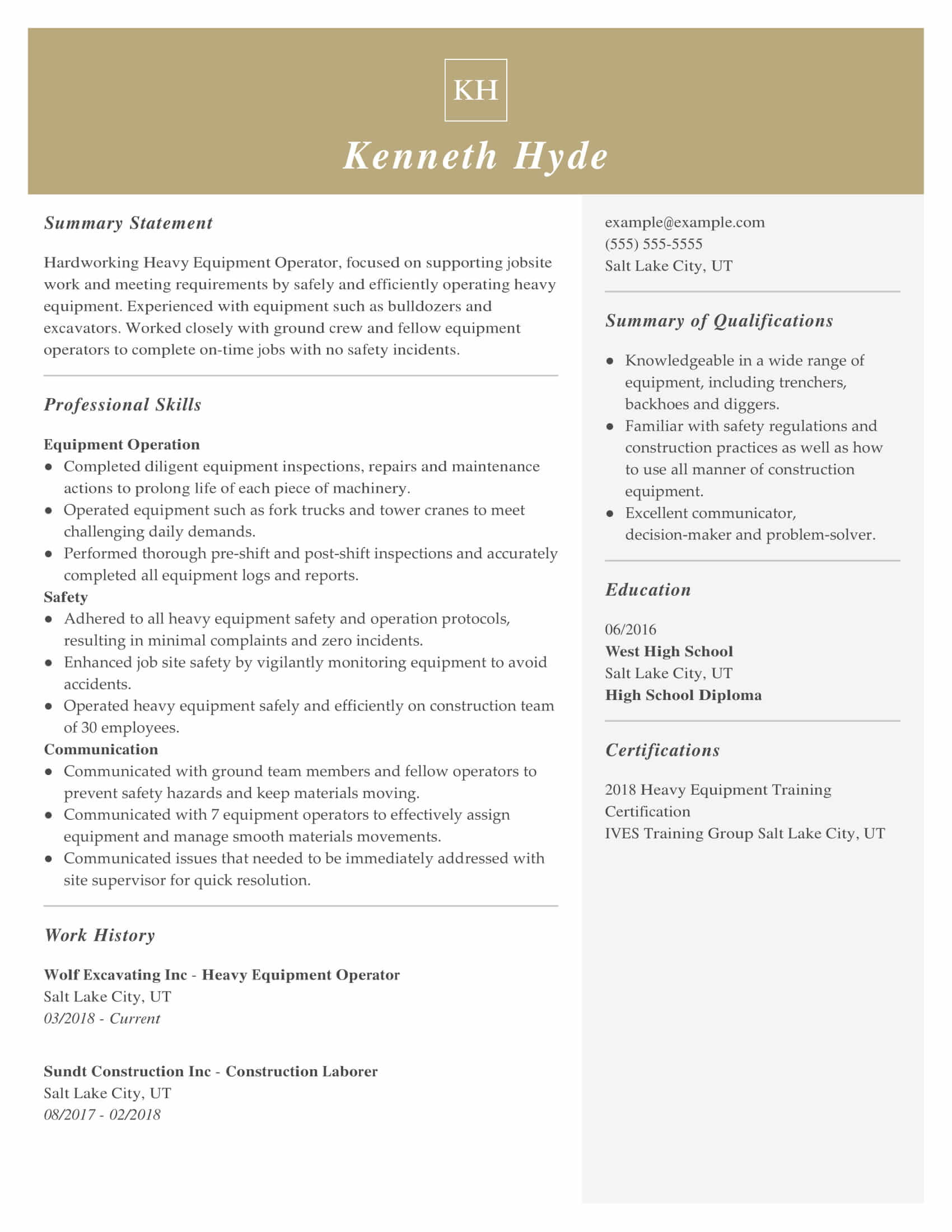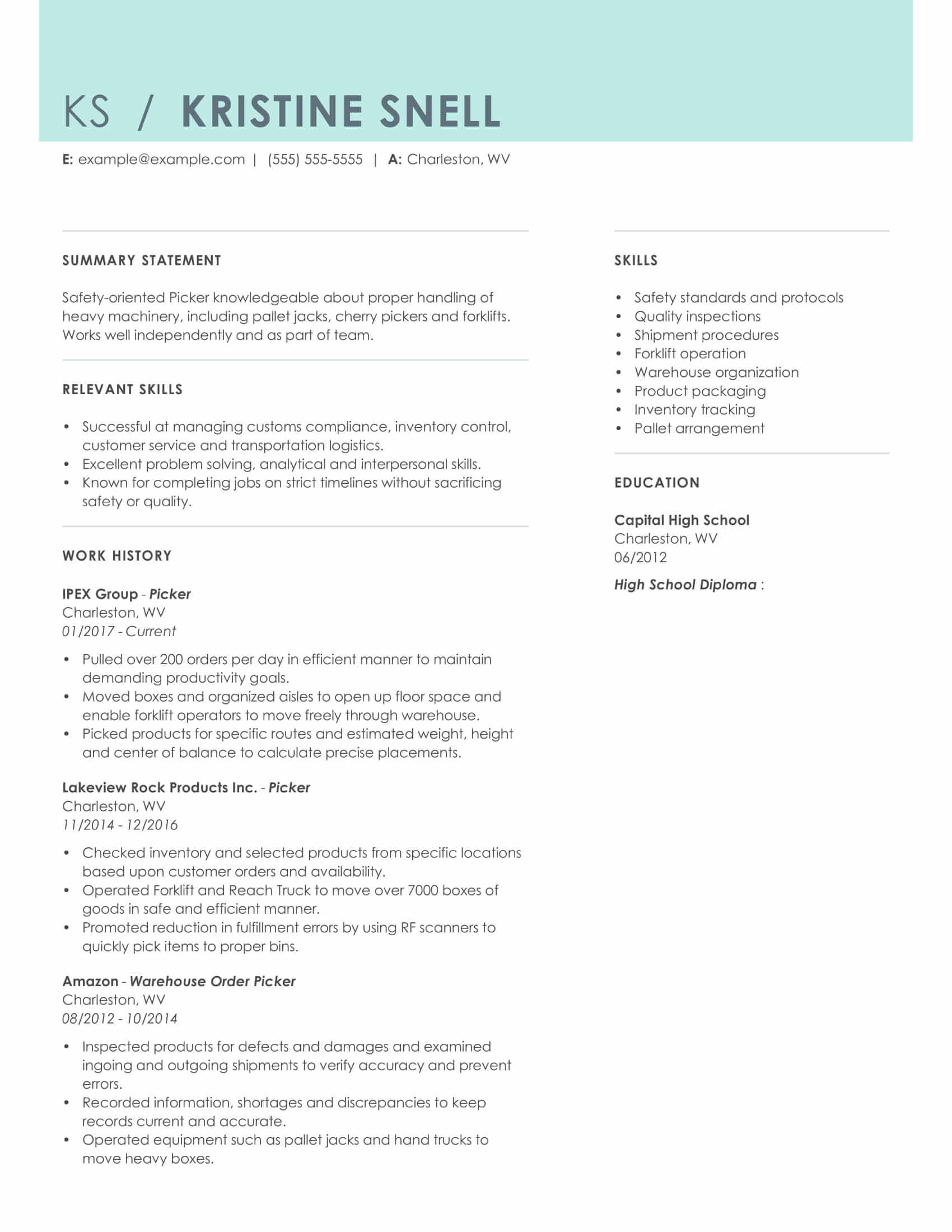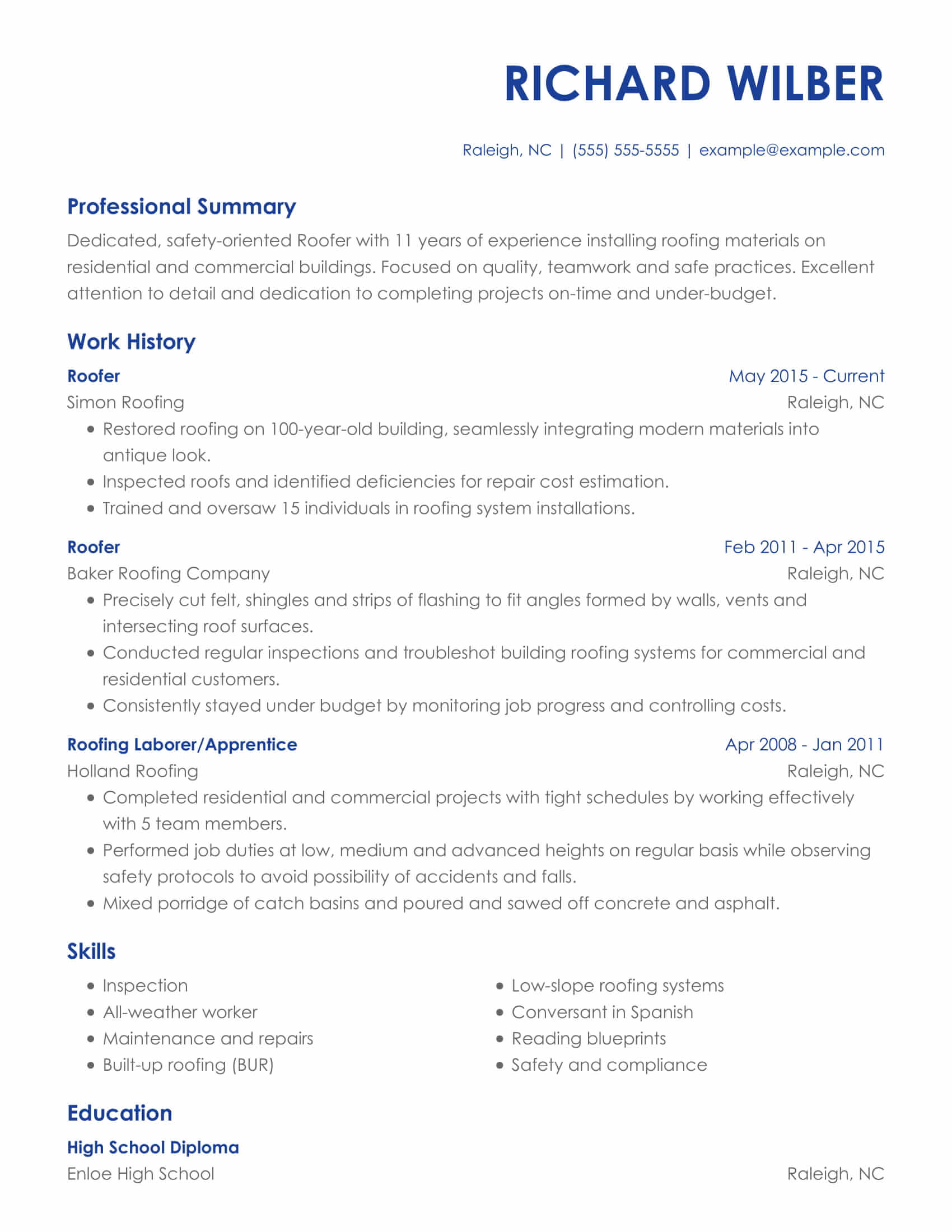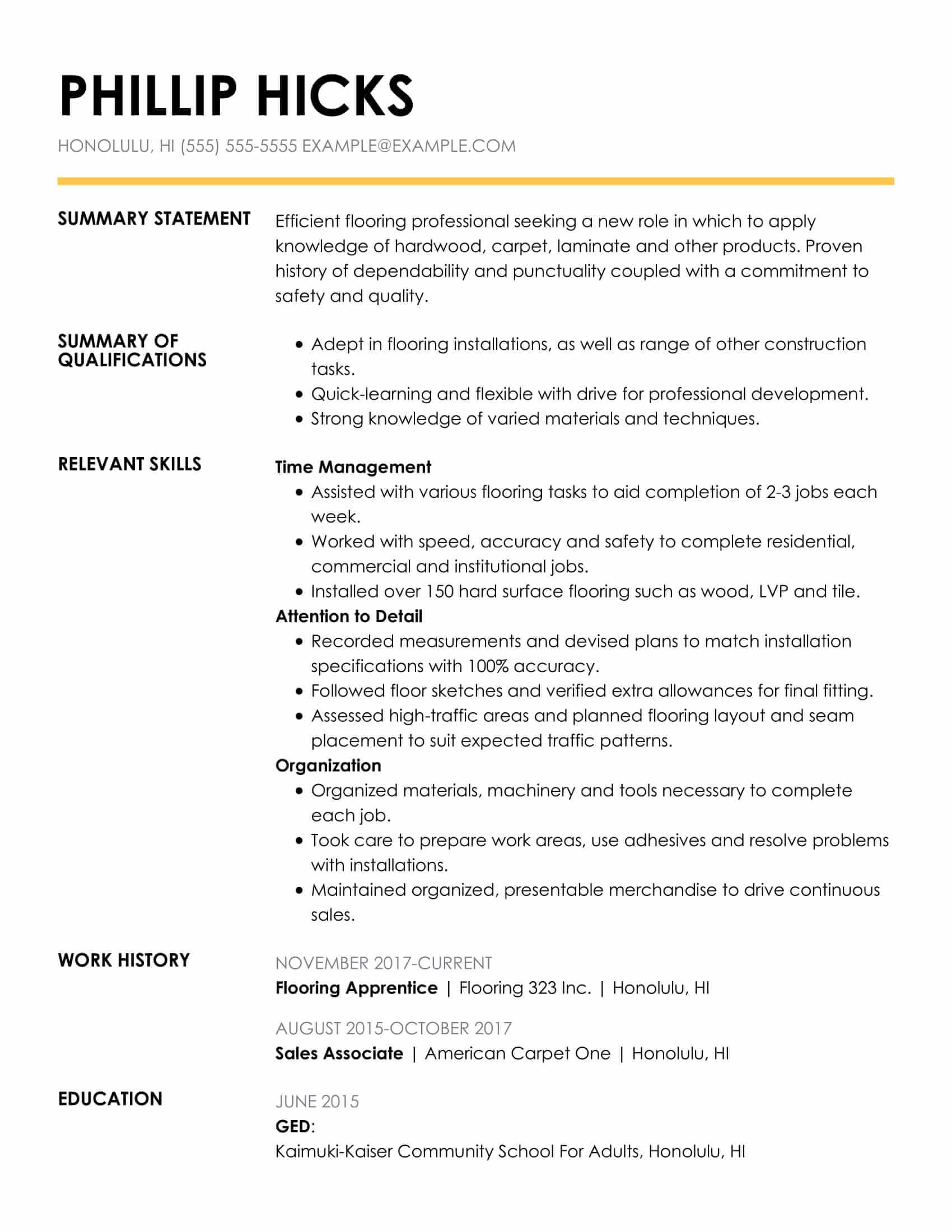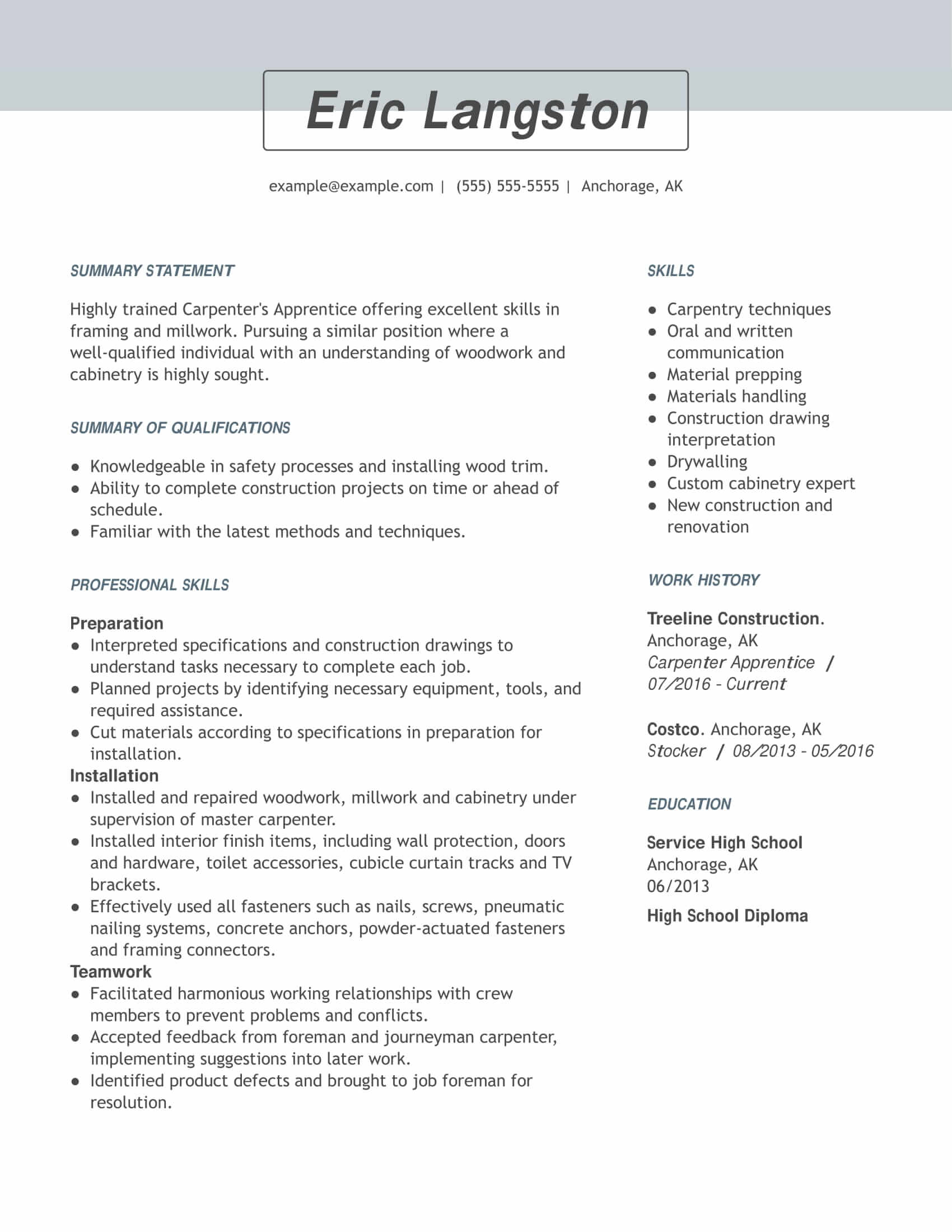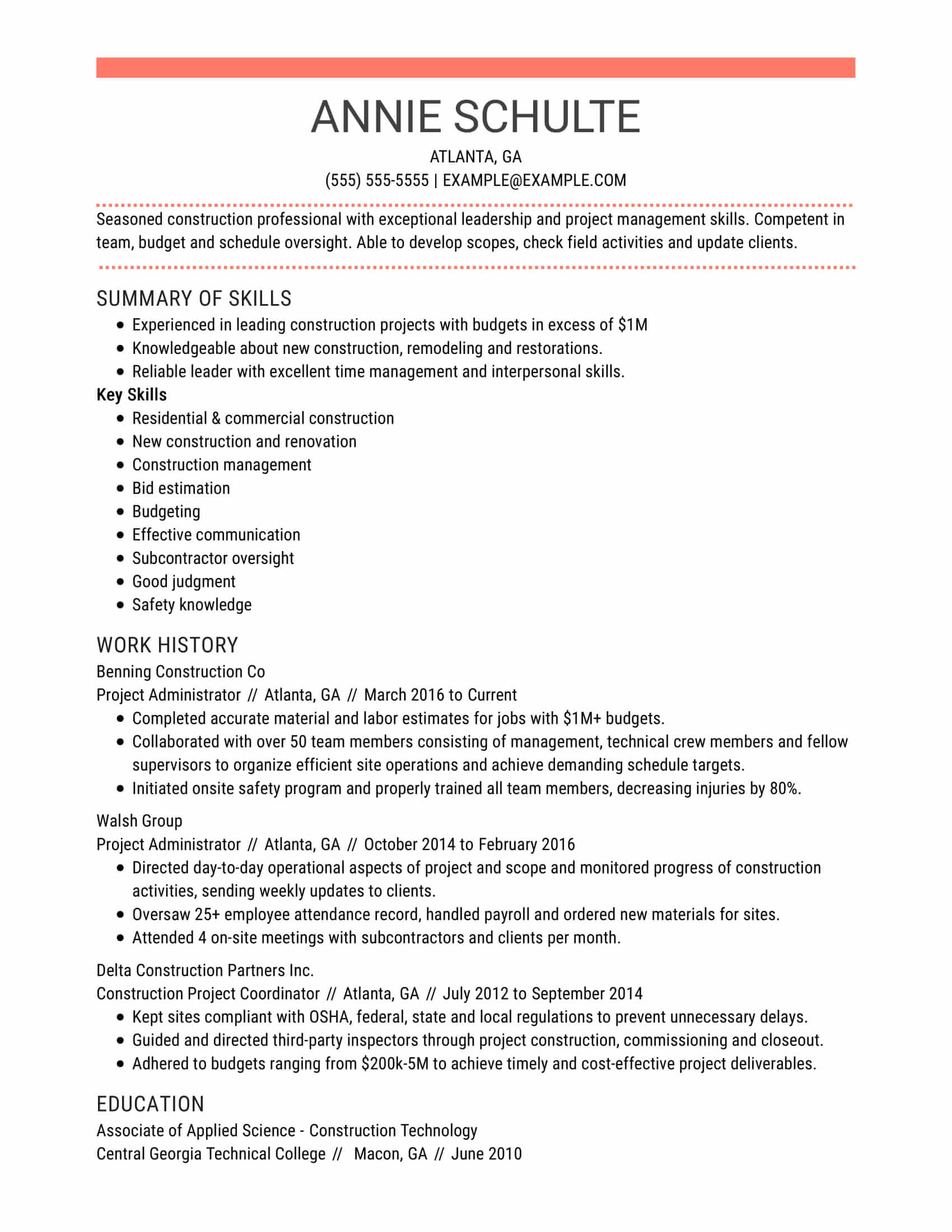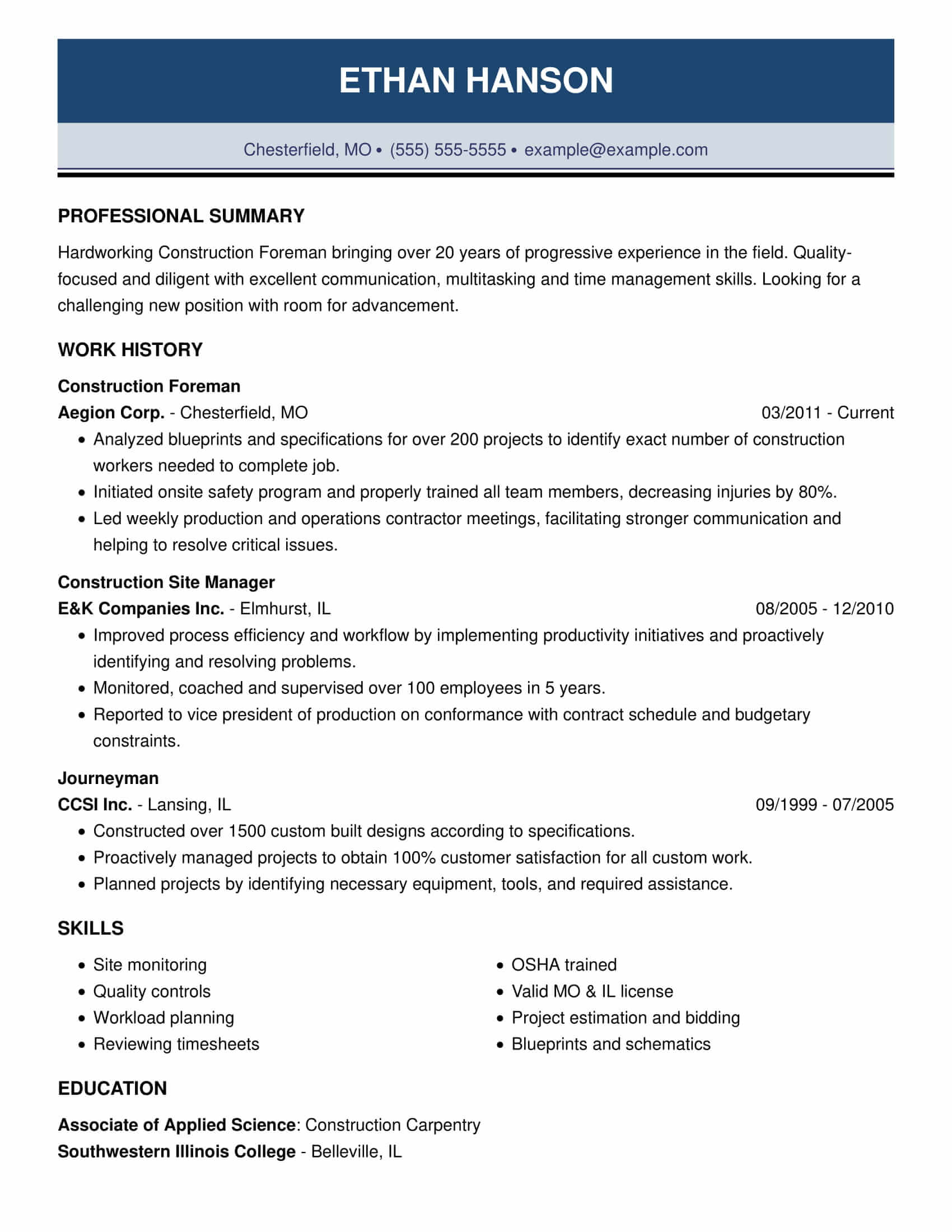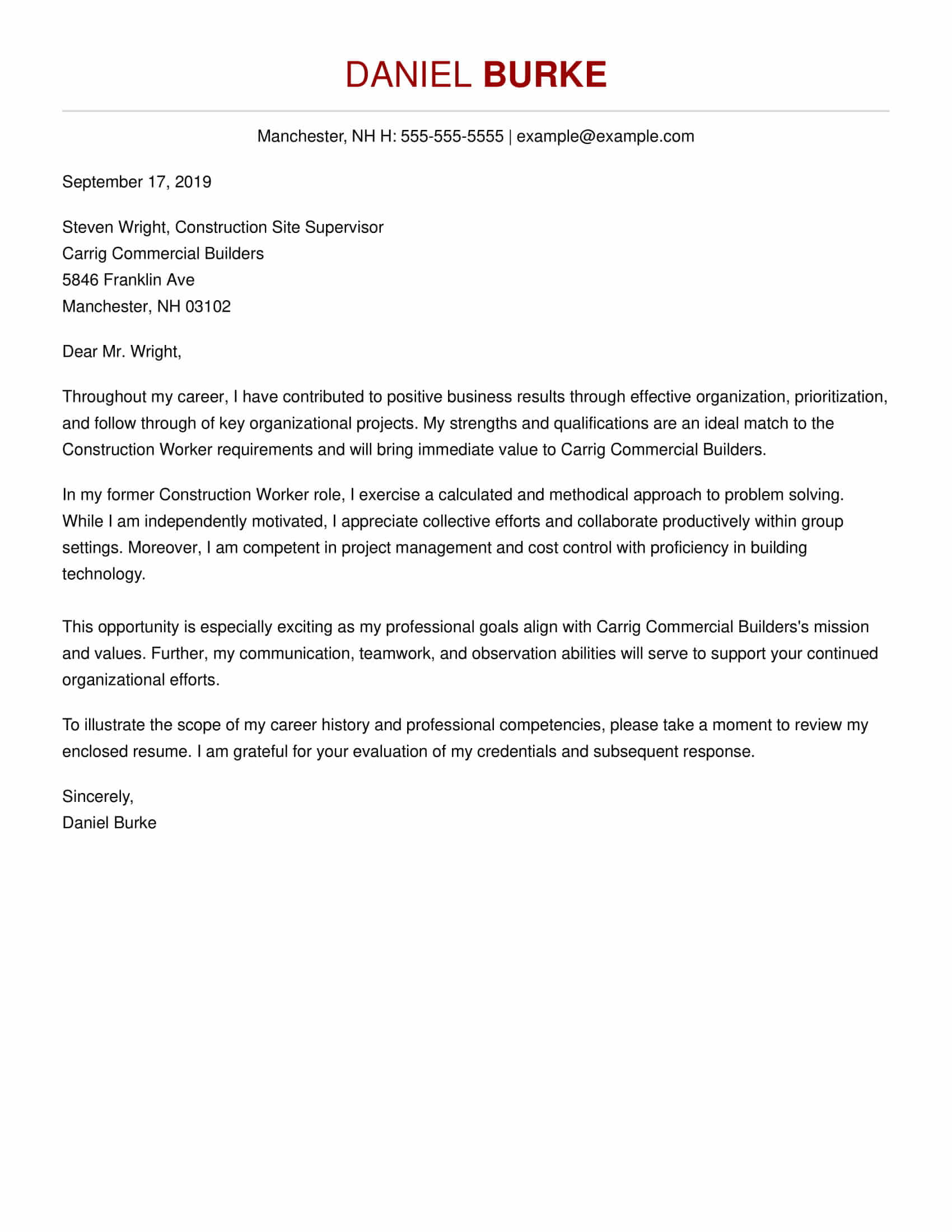Construction Resume Examples
Use our resume-writing tips and construction resume examples as the building block for a construction resume that shows off a robust skill set and valuable experience.
Our Recommended Template
Popular Templates in the Construction
Table of Contents
Construction Resume
- Aircraft Painter Resume
- Asbestos Worker Resume
- Asphalt Worker Resume
- Auto Paint Technician Resume
- Building Inspector Resume
- Building Manager Resume
- Carpenter Supervisor Resume
- Ceramic Tile Installer Resume
- Certified Crane Operator Resume
- Commercial Superintendent Resume
- Concrete Supervisor Resume
- Concrete Worker Resume
- Administrator Resume
- Apprentice Resume
- Inspector Resume
- Subcontractor Resume
- Drill Rig Operator Resume
- Drywall Installer Resume
- Excavator Operator Resume
- Finish Carpenter Resume
- Floor Covering Installer Resume
- Flooring Estimator Resume
- Handyman Resume
- Hazardous Materials Specialist Resume
- Hazardous Materials Technician Resume
- Home Inspector Resume
- House Painter Resume
- Painter Resume
- Insulator Resume
- Iron Worker Resume
- Journeyman Concrete Form Setter And Finisher Resume
- Laborer Worker Resume
- Landscape Laborer Resume
- Maintenance Carpenter Resume
- Professional Painter Resume
- Project Scheduler Resume
- Road Worker Resume
- Roofing Estimator Resume
- Scaffold Builder Resume
- Siding Installer Resume
- Spray Painter Resume
- Tile Installer Resume
- Windows And Door Installer Resume
Construction Cover Letter
Get Expert Writing Recommendations for Your Construction Resume
LiveCareer’s Resume Builder takes the guesswork out of resume writing by providing text suggestions to help you succinctly sum up and show off your construction skills and experience. Our certified resume writers crafted these category-specific job duties to simplify the process. You can use them as-is or customize them to match your own skills, training and experience in the construction field.
Here are examples of suggested text our Resume Builder might suggest when helping you write a construction resume:
- Installed and repaired woodwork, millwork and cabinetry under supervision of master carpenter.
- Trained and oversaw 15 individuals in roofing system installations.
- Operated fork trucks and tower cranes to meet challenging daily demands.
- Recorded measurements and devised plans to match installation specifications with 100 percent accuracy.
- Completed accurate material and labor estimates for jobs with $1M+ budgets.
- Kept sites compliant with OSHA, federal, state and local regulations to prevent unnecessary delays.
8 Dos and Don’ts for Writing a Construction Resume
- Do choose the resume format that best fits your skills and work history. If you have several years of job site experience interpreting supervisors’ orders, analyzing blueprints and completing custom-built residential designs, a chronological resume that showcases all of your experience is likely the right choice.
- If, on the other hand, you’re at an earlier point in your construction career, a functional resume may be the better option. This format lets you highlight specific skills you have developed thus far in your construction career, such as operating a dragline excavator or interpreting the specifications of construction drawings.
- Do find the right construction resume example for the job. The example you choose should reflect the environment of the workplace to which you’re applying. For instance, if you are submitting a resume for a job that involves custom-building contracts and homeowner consultations, a more artistic example can evoke your experience as a creative collaborator. If you are applying for a position with a more traditional and established firm, such as a roofing company or tile installation business, a more conservative resume example may be the smarter choice.
- Do get specific. Instead of writing that you have “operated heavy equipment,” explain that you have “more than a decade of experience operating bulldozers, graders and trenchers.” Instead of writing that you have “installed interior finishes,” include that you have “installed wall protection, doors, TV brackets, cubicle curtain tracks and toilet accessories.” Construction is detailed work. Breaking your skills and experience down to the nitty-gritty demonstrates exactly how well you fit the desired position.
- Do mention any certification and special training. If you hold a certified construction manager (CCM) credential or certification from the LEED Green Association, for example, put it on your resume.
- Don’t forget to mention if you’re licensed and bonded. This may seem like a no-brainer, but you should always confirm that you are following federal and state laws governing skilled laborers, contractors and other construction professionals.
- Don’t use the same resume for every job. Resumes are not one-size-fits-all, especially in the construction industry where there’s a diversity of specializations. Tailor your resume to each individual job you are applying for. Think of it this way: If you’re applying for a carpentry apprenticeship but your resume is full of plumbing details for the plumber apprenticeship you are also applying for, it may reflect poorly on your attention to detail and your level of interest in the position.
- Don’t forget to include an engaging summary. The average employer looks at a resume for less than 10 seconds. The best way to make a great first impression is to begin your construction resume with a professional summary that contains specific details about your skills and experience. For example, instead of writing that you are an “experienced roofer with an excellent safety track record,” write that you are a “safety-oriented roofer with 22 years of experience installing roofing materials for both residential and commercial buildings in the Greater Chicago area.”
- Don’t skimp on the tool talk. Including your technical skills is vital to a strong construction resume. Don’t merely note that you have effectively used a variety of fasteners; explain that you have experience with screws, nails, pneumatic nailing systems, concrete anchors, framing connectors and powder-actuated fasteners.
Consider These Skills for Your Construction Resume
Applicant tracking systems (ATS) are one of the biggest obstacles a job seeker faces when searching for employment in the construction industry. Employers at larger companies use ATS to screen out candidates by scanning resumes for expected keywords and skills. To advance your resume past ATS and into the hands of an actual human being, it is imperative that your document includes the construction-specific keywords that the employer expects.
How do you know what those keywords are? First, read the job posting carefully. Employers are often direct about the particular construction skills they need. Second, enlist the help of LiveCareer. Our Resume Builder will suggest the right mix of skills to add to your resume to help scoot it past an ATS. This suggested text could include proficiencies such as the following:
- Bid estimation.
- Carpentry techniques.
- Low-slope roofing systems.
- Materials handling.
- Drywalling.
- New construction and renovation.
- Trencher, backhoe and digger operation.
- Hazardous chemical handling.
- Construction drawing interpretation.
- Hand- and power-tool operation.
- Blueprints and schematics.
- Subcontractor oversight.
Construction Resumes for Every Professional Level
Entry-level applicants in the construction industry may benefit from using a functional resume format like the one above. Its emphasis sits squarely on professional skills and qualifications. Work history appears too, but its placement in the sidebar gives it less weight than if it were at the top of the document. This resume format devotes the most real estate to the job seeker’s wide variety of skills and qualifications, which will likely make him an attractive potential hire.
Build My ResumeFor mid-career construction professionals, the combination resume format is often the perfect fit. It strikes the right chord between the experience-focused chronological resume and the skill-centric functional format.
As evidenced in the resume above, a combination resume is generally split 50/50 between skills and experience, giving employers a balanced look at the applicant. Here, her wide range of management skills gets emphasis, as does her track record in project administration. Hiring managers can chart, for example, how she moved from projects coordinating 25-person teams to projects with twice as many people.
Build My ResumeExperienced job seekers looking for a senior- or executive-level job in the construction industry can showcase their work history by using a chronological resume format like the one pictured above. Much of the document focuses on the candidate’s extensive experience in construction. While it includes his skills and education, the emphasis in this format is where he has worked, what he has done, and how he has progressed from a journeyman carpenter to a construction foreman. Even the resume’s opening Professional Summary statement nods to his 20-plus years in the industry.
Build My ResumeMore construction resume samples
Find resume examples for your desired construction career. Get access to expert writing recommendations, do’s and don’ts and everything you need to write a perfect resume.
Resume Success Stories
Statistics and Facts About Construction Jobs
Median Annual Pay
Source: Bureau of Labor Statistics
Projected Job Growth from 2018–2028
Source: Bureau of Labor Statistics
Typical Job Titles
- Boilermaker
- Carpenter
- Electrician
- Glazier
- Ironworker
- Masonry Worker
- Painter
- Plumber
- Pipefitter
- Roofer
- Solar Photovoltaic Installer
- Tile Setter
Source: Bureau of Labor Statistics
Level of On-the-Job Training
Typically Required
- Construction Manager: Moderate
- Construction Equipment Operator: Moderate
- Carpenter: Apprenticeship
- Electrician: Apprenticeship
- Plumber: Apprenticeship
Source: Bureau of Labor Statistics
Median Age by Gender
Construction Manager
Construction Equipment Operator
Carpenter:
Electrician
Plumber
Source: DataUSA
Gender Diversity
Construction Manager
Construction Equipment Operator
Carpenter
Electrician
Plumber
Source: DataUSA
Average Salary Disparity by Gender
Construction Manager:
Men make 22% more than women
Construction Equipment Operator:
Men make 24% more than women
Carpenter:
Men make 33% more than women
Electrician:
Men make 8% more than women
Plumber:
Men make 3% more than women
Highest Construction Wages
by Location in 2017
- Upper East Side, New York, NY
- North Beach and Chinatown, San Francisco, CA
- Central Milwaukee, WI
Most Commonly Held Construction
Industry Occupations in 2017
Construction Laborer
Over 1.4 million people in workforce
Construction Manager
Over 600,000 people in workforce
First-line Supervisor
Over 600,000 people in workforce
Carpenter
Over 800,000 people in workforce
Electrician
Over 500,000 people in workforce
Least Commonly Held Construction
Industry Occupations in 2017
- Public relations and fundraising: Fewer than 400 people
- Miscellaneous legal support workers: Fewer than 400 people
- Miscellaneous extraction workers, such as roof bolters: Approximately 350 people
- First-line supervisors of landscaping, lawn service and groundskeeping workers: Approximately 325 people
- Sailors, marine oilers and ship engineers: Approximately 250 people
